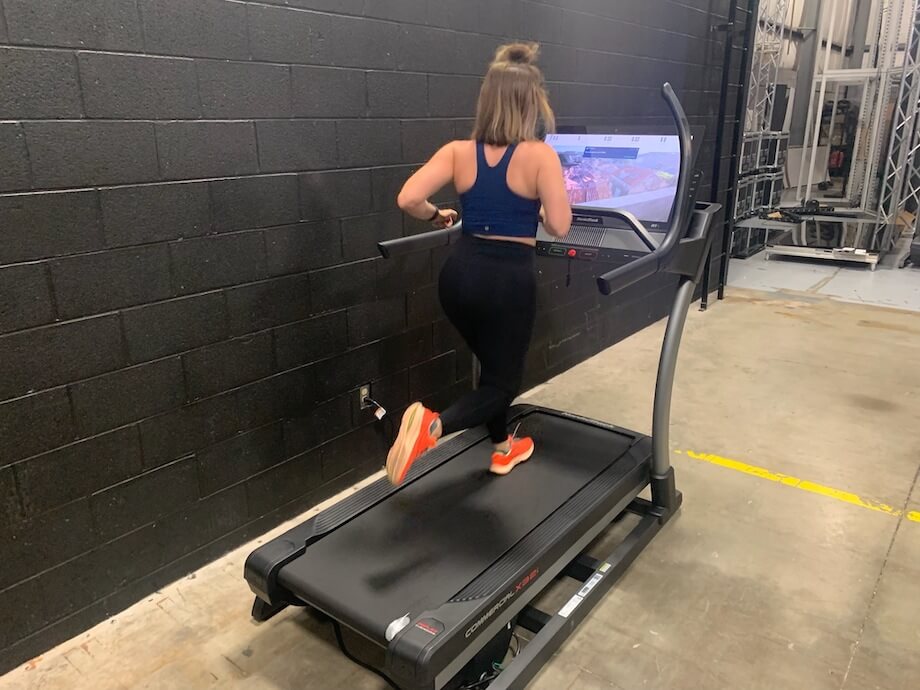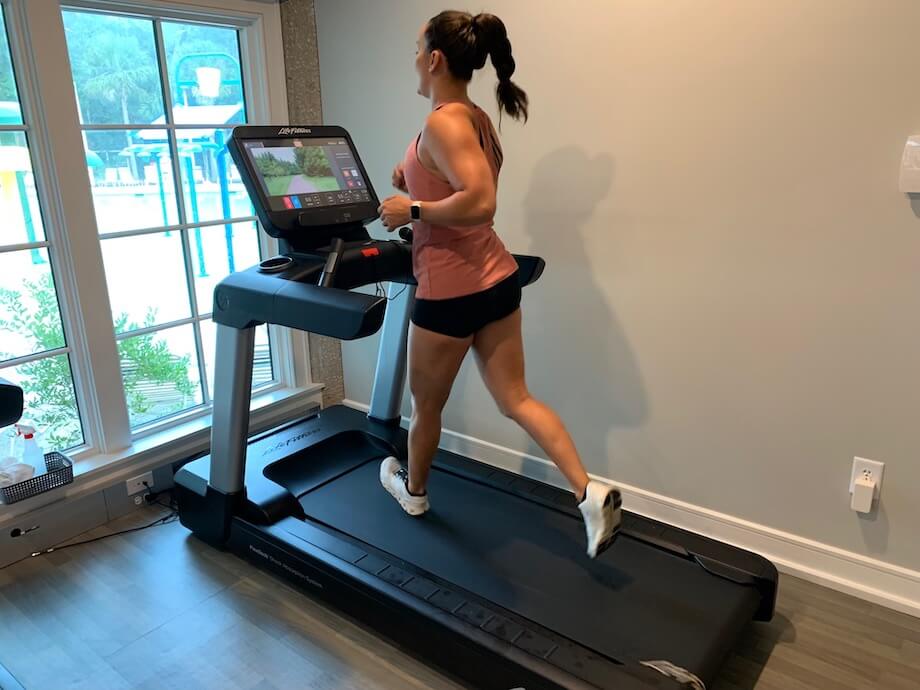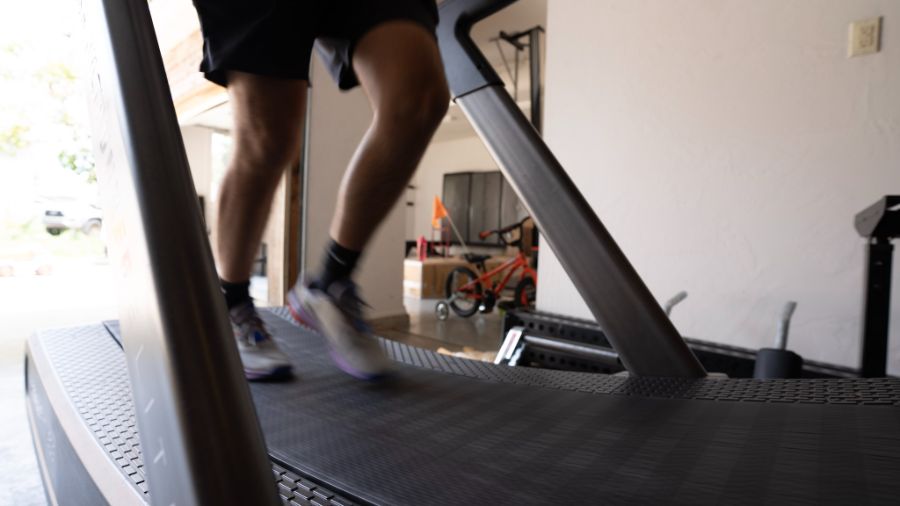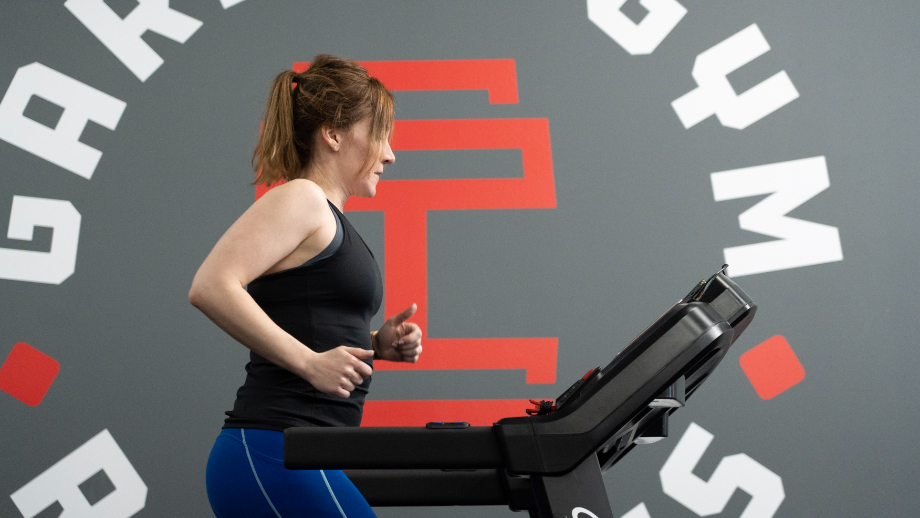We test and review fitness products based on an independent, multi-point methodology. If you use our links to purchase something, we may earn a commission. Read our disclosures.
Whether you’re preparing for a 5K, a marathon, or anything in between, tempo running can play an important role in your training plan. In fact, a September 2021 study1 published in the Journal of Strength and Conditioning Research found that tempo runs were the most important predictors of long-distance running performance. Wait, let me check that again. Yep, tempo runs are major predictors of running performance.
Tempo runs, sometimes called threshold runs, require sustained effort for a predetermined period of time. Depending on your goals, your tempo could last anywhere from 20 to 40 minutes (or sometimes longer) at a pace about 25 to 30 seconds slower than your 5K race pace.
Technically speaking, you’re running at your lactate threshold pace, or the fastest you can run, while still able to clear the lactate in your system. Blood lactate stems from lactic acid build-up and is responsible for that pesky burning sensation and fatigue you feel when putting in the hard work.
As your body gets more efficient at clearing lactate, you can run faster for longer periods, a welcomed benefit on race day. But that’s not the only positive you’ll notice when rocking those tempo run workouts. In this article, we’ll look at the ins and outs of threshold training through tempo runs.

Origin of Tempo Runs
Tempo runs first hit the map in 1982 when the European Journal of Applied Physiology and Occupational Physiology published a study2 that examined the effects of a weekly tempo run for distance and mid-distance runners. After 14 weeks of these one-a-week tempos, the participating runners improved their pace, going from an average of 5:43 per mile to 5:29 per mile.
Then 16 years later, respected running coach Jack Daniels popularized the tempo run in his book Daniels’ Running Formula. His book remains a favorite among runners to this day.
Benefits of Tempo Runs
The most obvious benefit of tempo runs is your improved speed and endurance, two handy tools to bring to the starting line on race day. But they also help develop many other areas of health and fitness, including mental toughness.
Improves Speed
When lactic acid builds in the muscles, it can cause fatigue and soreness, making you feel like you’re sprinting through a pool of jello. Since tempo running improves your anaerobic threshold, you should have less lactic acid build-up, improving your speed.
Increases Cardio Endurance
Tempo runs help your body adapt to cardiovascular training by improving your VO2 max. A December 2018 study3 in the Journal of International Anatolia Sport Science found that consistent anaerobic demands help support aerobic capacity.

Supports Mental Gains
It’s no secret that tempo runs are tough. They push you just shy of your limit, both physically and mentally. But just like your body grows stronger with each training run, so does your mindset. Persevering through a challenging training session makes you much more prepared for race time.
How Do I Do a Tempo Run?
There are many different types of tempo runs, but generally, they are a form of speed work with demands similar to fartleks and interval training.
Tempo runs aim to improve your maximum oxygen uptake, or VO2 max, by increasing your lactate threshold. They should feel difficult but not impossible. Since tempo runs are based on many individualized factors, you might have questions like what is a tempo effort? What is a good tempo run pace? How often do I need to incorporate tempo running into my training program? Don’t worry; you’re not alone.

One quality speed workout each week will provide significant benefits to your athletic performance. More experienced runners may decide to add an interval workout to their week to squeeze in a second speed workout, but that depends on your overall fitness goals.
Here’s an average breakdown of a tempo run:
- Warm-up: Just like any other workout, ensure your muscles are good and warm before bumping up your speed. Try for 10 to 12 minutes or one mile of easy-paced running.
- Speed up: Once you’re warmed up, increase your speed to your tempo run pace. Focus on steady breathing and consistent effort level.
- Tempo run: The actual tempo running portion of your workout will likely last 20 to 40 minutes (depending on the race distance you’re training for). Your tempo pace should feel challenging but should only bring you to 80-90% of your maximum heart rate. On average, your tempo pace is around 25 to 30 seconds slower than your 5K race pace.
- Cooldown: Once you’ve crossed the finish line of your tempo run, don’t stop moving. Slow to a light jog to bring your heart rate down, and then spend some time walking and stretching before hitting the showers.
Helpful training tip: Set your tempo run’s pace with some good quality tunes.
Let’s Get Sweaty: A Tempo Workout to Try
Tempo runs come in all shapes and sizes. A distance runner’s tempo run will look different from a middle-distance runner’s tempo run. If you’re looking for a threshold workout that doesn’t require much thought, you’ll definitely feel the burn with a classic tempo run such as:
- 10 minutes easy pace
- 20 minutes tempo pace
- 10 minutes easy pace again
But if you’re looking to spice up your tempo session with something different, give this sample workout a go:
- Warm-up: 10 minutes at an easy pace
- Run one mile at your tempo pace
- Walk for 60 seconds
- Repeat 2-4 times
- Cool down: 10-minute light jog followed by a stretch session
Tempo runs are a great way to get your speed training done because no two sessions have to be the same. You can mix it up week-to-week or stick with what you love and try to improve your pace each time.
What is a Tempo Run: Final Thoughts
Whether you’re in the thick of marathon training or looking to improve your speed for that upcoming 5K, tempo runs can have a huge impact on your running game. Your tempo effort is a delicate balance between aerobic and anaerobic metabolism, feeling challenging but not impossible. This type of workout offers many benefits, from a faster pace on race day to improved mental strength. One tempo run per week is a great way to log your speed training.
- Tempo runs usually last between 20 and 40 minutes.
- If you’re running longer races, your tempo runs will be on the longer side.
- The average tempo pace is about 25 to 30 seconds slower than your 5K race pace.
- Tempo runs offer aerobic and anaerobic benefits.
- Tempo training can boost your speed, endurance, and mental toughness.
What is a Tempo Run FAQs
What is a tempo run example?
A simple, classic tempo run may look like this: 10 minutes at an easy pace followed by 20 minutes at your tempo pace and a 10-minute, easy-paced cooldown.
How do you perform a tempo run?
Every tempo run can be different from the next, depending on who’s running it and their goals. On average, you should run at approximately 25 to 30 seconds slower than your typical 5K race pace. Tempos are usually between 20 and 40 minutes long. If you’re training for long distances, your tempo will be on the longer side. Shorter distances call for shorter tempo runs.
What is a tempo run vs easy run?
Tempo runs focus on your lactate-clearing abilities by testing your threshold limits at a faster pace than your typical easy runs. Easy runs are meant to be comfortable and serve as a recovery workout.
How fast should a tempo run be for a 5k?
Your tempo runs should be about 25 to 30 seconds slower than your 5K pace. So, if your 5K race pace is 7 minutes per mile, your tempo training runs should be approximately 7:30 minutes per mile.
References
- Casado, Arturo & Hanley, Brian & Santos-Concejero, Jordan & Ruiz, Luis. (2021). World-Class Long-Distance Running Performances Are Best Predicted by Volume of Easy Runs and Deliberate Practice of Short-Interval and Tempo Runs. The Journal of Strength and Conditioning Research. 35. 2525-2531. 10.1519/JSC.0000000000003176.
- Sjödin, B., Jacobs, I., & Svedenhag, J. (1982). Changes in onset of blood lactate accumulation (OBLA) and muscle enzymes after training at OBLA. European journal of applied physiology and occupational physiology, 49(1), 45–57. https://doi.org/10.1007/BF00428962
- Sözen H, Akyıldız C. The effects of aerobic and anaerobic training on aerobic and anaerobic capacity. J Int Anatolia Sport Sci. 2018;3(3):331-337. doi:10.5505/jiasscience.2018.68077
Further reading

Whether you’re preparing for a 5K, a marathon, or anything in between, tempo running can play an important role in your training plan. In fact, a September 2021 study1 published in the Journal of Strength and Conditioning Research found that tempo runs were the most important predictors of long-distance running performance. Wait, let me check that again. Yep, tempo runs are major predictors of running performance.Tempo runs, » Read more about: What is a Tempo Run? Hit Your Next PR With This Training Technique » Read more

It’s the clash of two iFIT-enabled brands, but which one will come out on top in the ProForm vs NordicTrack elliptical debate? Read more

Looking for a folding elliptical? Check out our NordicTrack SE9i review for all the details on this unique piece of cardio equipment. Read more

Find out in this Marcy ME-709 Recumbent Exercise Bike review if this is the stationary bike that will kick-start your fitness routine. Read more

